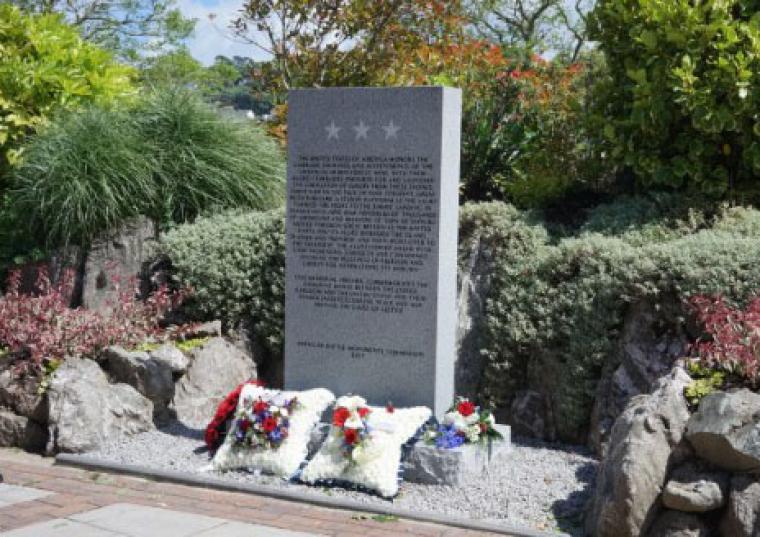
On the 73rd anniversary of the D-Day landings, the American Battle Monuments Commission (ABMC) dedicated two new monuments to mark the importance of Dartmouth, England in World War II.
Allied forces launched the liberation of Europe from the northern shores of the English Channel. Dartmouth was roughly in the center of the sector used by the Americans. This small town, located on the southern coast of England, transformed into a training base and into a massive logistical and supply center for the Normandy invasion and subsequent fighting on the continent. In the days, weeks and months following the D-Day landings, hundreds of thousands of troops and millions of tons of supplies moved across the English Channel through Dartmouth, and ports like it.
At the dedication ceremony for the Dartmouth Monument, ABMC Commissioner Barbaralee Diamonstein-Spielvogel spoke about the importance of remembering the Allied service and sacrifice during the war. “We can never sufficiently thank those who served, and who died during the Second World War. But today, in lands kept free by the sacrifice of men and women dedicated to that freedom, we come to honor their service and their heroism,” said Diamonstein-Spielvogel. “Let us resolve to prove worthy of the sacrifice represented by this monument.” The Dartmouth Monument, a granite stone located outside Royal Avenue Gardens park, is inscribed with a historical tribute to America’s Armed Forces, and to our Allied comrades.
Later in the day, the XI Amphibious Force Marker, located in the Britannia Royal Naval College (BRNC), was also dedicated. As the headquarters for the XI Amphibious Force, American military leaders planned, prepared, and organized from this location beginning in 1943.
Capt. Jol Woodard, commanding officer of BRNC and Col. Michael Brant Stephenson, U.S. Army Attaché at the Embassy in London, unveiled this bronze marker. Stephenson spoke about the unique friendship between the United States and the United Kingdom, solidified in common cause during World War II. “It is the shared and common values of our people, our culture and history that bring us here together, every day in the special relationship,” said Stephenson. “The special relationship continues as we stand side-by-side to counter terrorism. That brings us to where the special relationship really began as we stood side-by-side to defeat Nazi tyranny 73 years ago.”
The Dartmouth Monument is the 28th, and the XI Amphibious Force Marker the 29th memorial, monument, or marker managed by ABMC
About ABMC:
Established by Congress in 1923, the American Battle Monuments Commission commemorates the service, achievements, and sacrifice of U.S. armed forces. ABMC administers 26 overseas military cemeteries, and 29 memorials, monuments, and markers.
 An official website of the United States government. Here's how you know.
An official website of the United States government. Here's how you know. 